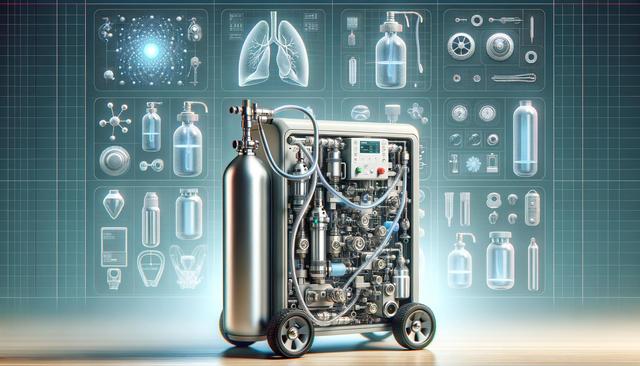Understanding How Oxygen Concentrators Work
Oxygen concentrators are medical devices designed to provide supplemental oxygen to individuals with respiratory conditions that cause low blood oxygen levels. Unlike oxygen tanks that store a finite supply of oxygen, concentrators work by taking in ambient air, removing nitrogen, and delivering concentrated oxygen to the user. Typically, these devices deliver oxygen through a nasal cannula or face mask, offering a continuous or pulsed flow depending on the model. This technology enables users to receive necessary respiratory support without the logistical challenges of frequent tank replacements or refills.
These devices are particularly useful for people with chronic obstructive pulmonary disease (COPD), pulmonary fibrosis, and other long-term lung conditions. Thanks to advancements in filtration and compression mechanisms, modern oxygen concentrators are more compact, energy-efficient, and quieter than earlier models. Many users find this portability essential for maintaining independence and mobility while managing their health at home. Additionally, concentrators are available in both stationary and portable versions, making them adaptable to various lifestyles and needs.
The Shift Toward At-Home Respiratory Care
Healthcare is increasingly moving from clinical settings into the home, and oxygen concentrators are at the forefront of this transition. With global health systems encouraging home-based care to reduce hospital admissions and improve quality of life, oxygen concentrators play a pivotal role in enabling patients to manage their conditions outside of traditional medical environments. This shift is especially beneficial for elderly individuals or those with mobility limitations who may find frequent hospital visits challenging.
Several factors contribute to this trend:
- Improvements in home medical technology
- Increased patient education and self-monitoring tools
- Rising healthcare costs and the need for efficient resource allocation
- Greater emphasis on patient comfort and autonomy
As a result, oxygen concentrators are becoming a common fixture in many households where respiratory support is needed. They not only offer a more convenient solution but also promote a higher degree of self-care and health monitoring, which can lead to better long-term outcomes.
Key Features That Enhance Usability
Modern oxygen concentrators are designed with user-friendliness in mind, making them suitable for a wide range of patients. Most units feature intuitive controls, digital displays, and built-in alarms to alert users to changes in operation or oxygen purity levels. Portability is another major advantage—many newer models are lightweight and equipped with rechargeable batteries, allowing users to carry them during travel or outdoor activities.
Some of the most appreciated features include:
- Adjustable flow settings to match individual oxygen needs
- Quiet operation for minimal disruption during sleep or rest
- Low maintenance requirements with easily replaceable filters
- Energy-efficient systems to reduce electricity usage
These improvements not only make the devices more practical but also reduce the burden on caregivers and family members who assist with daily care. The availability of accessories such as carrying cases, car adapters, and mobile charging options further enhances the adaptability of these devices for active lifestyles.
Safety and Maintenance Considerations
While oxygen concentrators are generally safe and easy to use, proper maintenance and adherence to safety guidelines are crucial for optimal performance. Users should routinely clean or replace air filters, ensure adequate ventilation around the device, and avoid using it near open flames or smoking areas due to the flammable nature of concentrated oxygen. Regular servicing by qualified technicians also helps in early detection of potential issues, ensuring uninterrupted operation.
Safety tips include:
- Keeping the unit away from curtains or other materials that could block airflow
- Using surge protectors to prevent damage from electrical spikes
- Monitoring for unusual sounds or error messages on the display
- Following manufacturer recommendations for cleaning and part replacement
By observing these precautions, users can depend on their oxygen concentrators for consistent support without jeopardizing their safety or the device’s longevity.
The Evolving Role of Oxygen Concentrators in Respiratory Health
Oxygen concentrators are not just devices; they represent a shift in how we approach respiratory care. With innovations in telehealth and remote monitoring, many modern concentrators can now be integrated with digital platforms that allow healthcare providers to track usage data and oxygen levels in real time. This connectivity enhances patient-doctor communication and enables timely interventions if oxygen requirements change.
In light of these advancements, oxygen concentrators are increasingly viewed as part of a comprehensive respiratory care ecosystem. They complement other tools such as pulse oximeters, mobile health apps, and wearable monitors, allowing for a more personalized and proactive approach to managing chronic respiratory conditions. As the healthcare landscape continues to evolve, the role of oxygen concentrators is likely to expand, offering users greater control over their health and contributing to a more sustainable model of home-based care.
Conclusion: A Reliable Option for Long-Term Support
For individuals facing chronic respiratory challenges, oxygen concentrators offer a practical and effective method of maintaining adequate oxygen levels without relying on traditional tank-based systems. Their portability, ease of use, and integration with modern health technologies make them a strong option for those seeking more independence in managing their condition at home. As healthcare continues to shift toward patient-centered models, oxygen concentrators are poised to play a significant role in shaping the future of home breathing support. Whether for ongoing therapy or temporary recovery, these devices provide a dependable solution that aligns with the needs and lifestyles of today’s patients.




Leave a Reply